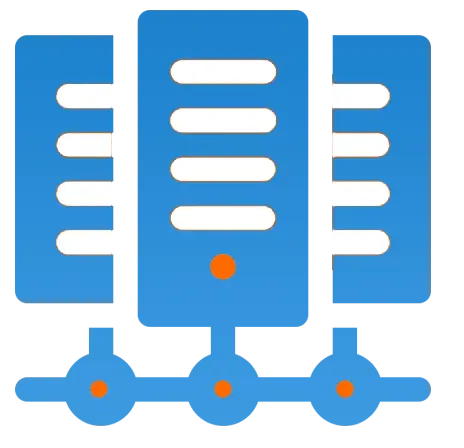Get 69% Off on Cloud Hosting : Claim Your Offer Now!
- Products
-
Compute
Compute
- Predefined TemplatesChoose from a library of predefined templates to deploy virtual machines!
- Custom TemplatesUse Cyfuture Cloud custom templates to create new VMs in a cloud computing environment
- Spot Machines/ Machines on Flex ModelAffordable compute instances suitable for batch jobs and fault-tolerant workloads.
- Shielded ComputingProtect enterprise workloads from threats like remote attacks, privilege escalation, and malicious insiders with Shielded Computing
- GPU CloudGet access to graphics processing units (GPUs) through a Cyfuture cloud infrastructure
- vAppsHost applications and services, or create a test or development environment with Cyfuture Cloud vApps, powered by VMware
- Serverless ComputingNo need to worry about provisioning or managing servers, switch to Serverless Computing with Cyfuture Cloud
- HPCHigh-Performance Computing
- BaremetalBare metal refers to a type of cloud computing service that provides access to dedicated physical servers, rather than virtualized servers.
-
Storage
Storage
- Standard StorageGet access to low-latency access to data and a high level of reliability with Cyfuture Cloud standard storage service
- Nearline StorageStore data at a lower cost without compromising on the level of availability with Nearline
- Coldline StorageStore infrequently used data at low cost with Cyfuture Cloud coldline storage
- Archival StorageStore data in a long-term, durable manner with Cyfuture Cloud archival storage service
-
Database
Database
- MS SQLStore and manage a wide range of applications with Cyfuture Cloud MS SQL
- MariaDBStore and manage data with the cloud with enhanced speed and reliability
- MongoDBNow, store and manage large amounts of data in the cloud with Cyfuture Cloud MongoDB
- Redis CacheStore and retrieve large amounts of data quickly with Cyfuture Cloud Redis Cache
-
Automation
Automation
-
Containers
Containers
- KubernetesNow deploy and manage your applications more efficiently and effectively with the Cyfuture Cloud Kubernetes service
- MicroservicesDesign a cloud application that is multilingual, easily scalable, easy to maintain and deploy, highly available, and minimizes failures using Cyfuture Cloud microservices
-
Operations
Operations
- Real-time Monitoring & Logging ServicesMonitor & track the performance of your applications with real-time monitoring & logging services offered by Cyfuture Cloud
- Infra-maintenance & OptimizationEnsure that your organization is functioning properly with Cyfuture Cloud
- Application Performance ServiceOptimize the performance of your applications over cloud with us
- Database Performance ServiceOptimize the performance of databases over the cloud with us
- Security Managed ServiceProtect your systems and data from security threats with us!
- Back-up As a ServiceStore and manage backups of data in the cloud with Cyfuture Cloud Backup as a Service
- Data Back-up & RestoreStore and manage backups of your data in the cloud with us
- Remote Back-upStore and manage backups in the cloud with remote backup service with Cyfuture Cloud
- Disaster RecoveryStore copies of your data and applications in the cloud and use them to recover in the event of a disaster with the disaster recovery service offered by us
-
Networking
Networking
- Load BalancerEnsure that applications deployed across cloud environments are available, secure, and responsive with an easy, modern approach to load balancing
- Virtual Data CenterNo need to build and maintain a physical data center. It’s time for the virtual data center
- Private LinkPrivate Link is a service offered by Cyfuture Cloud that enables businesses to securely connect their on-premises network to Cyfuture Cloud's network over a private network connection
- Private CircuitGain a high level of security and privacy with private circuits
- VPN GatewaySecurely connect your on-premises network to our network over the internet with VPN Gateway
- CDNGet high availability and performance by distributing the service spatially relative to end users with CDN
-
Media
-
Analytics
Analytics
-
Security
Security
-
Network Firewall
- DNATTranslate destination IP address when connecting from public IP address to a private IP address with DNAT
- SNATWith SNAT, allow traffic from a private network to go to the internet
- WAFProtect your applications from any malicious activity with Cyfuture Cloud WAF service
- DDoSSave your organization from DoSS attacks with Cyfuture Cloud
- IPS/ IDSMonitor and prevent your cloud-based network & infrastructure with IPS/ IDS service by Cyfuture Cloud
- Anti-Virus & Anti-MalwareProtect your cloud-based network & infrastructure with antivirus and antimalware services by Cyfuture Cloud
- Threat EmulationTest the effectiveness of cloud security system with Cyfuture Cloud threat emulation service
- SIEM & SOARMonitor and respond to security threats with SIEM & SOAR services offered by Cyfuture Cloud
- Multi-Factor AuthenticationNow provide an additional layer of security to prevent unauthorized users from accessing your cloud account, even when the password has been stolen!
- SSLSecure data transmission over web browsers with SSL service offered by Cyfuture Cloud
- Threat Detection/ Zero DayThreat detection and zero-day protection are security features that are offered by Cyfuture Cloud as a part of its security offerings
- Vulnerability AssesmentIdentify and analyze vulnerabilities and weaknesses with the Vulnerability Assessment service offered by Cyfuture Cloud
- Penetration TestingIdentify and analyze vulnerabilities and weaknesses with the Penetration Testing service offered by Cyfuture Cloud
- Cloud Key ManagementSecure storage, management, and use of cryptographic keys within a cloud environment with Cloud Key Management
- Cloud Security Posture Management serviceWith Cyfuture Cloud, you get continuous cloud security improvements and adaptations to reduce the chances of successful attacks
- Managed HSMProtect sensitive data and meet regulatory requirements for secure data storage and processing.
- Zero TrustEnsure complete security of network connections and devices over the cloud with Zero Trust Service
- IdentityManage and control access to their network resources and applications for your business with Identity service by Cyfuture Cloud
-
-
Compute
- Solutions
-
Solutions
Solutions
-
 Cloud
Hosting
Cloud
Hosting
-
 VPS
Hosting
VPS
Hosting
-
GPU Cloud
-
 Dedicated
Server
Dedicated
Server
-
 Server
Colocation
Server
Colocation
-
 Backup as a Service
Backup as a Service
-
 CDN
Network
CDN
Network
-
 Window
Cloud Hosting
Window
Cloud Hosting
-
 Linux
Cloud Hosting
Linux
Cloud Hosting
-
Managed Cloud Service
-
Storage as a Service
-
 VMware
Public Cloud
VMware
Public Cloud
-
 Multi-Cloud
Hosting
Multi-Cloud
Hosting
-
 Cloud
Server Hosting
Cloud
Server Hosting
-
 Bare
Metal Server
Bare
Metal Server
-
 Virtual
Machine
Virtual
Machine
-
 Magento
Hosting
Magento
Hosting
-
Remote Backup
-
 DevOps
DevOps
-
 Kubernetes
Kubernetes
-
 Cloud
Storage
Cloud
Storage
-
NVMe Hosting
-
 DR
as s Service
DR
as s Service
-
-
Solutions
- Marketplace
- Pricing
- Resources
- Resources
-
By Product
Use Cases
-
By Industry
- Company
-
Company
Company
-
Company
Data Lake Vs Data Factory Vs Data Warehouse
Table of Contents
A data lake, data factory, and data warehouse are all systems that are used to store, process, and manage data, but they serve different purposes and have different capabilities.
A data lake is a large-scale repository of raw data, structured and unstructured, that is stored in its original format. Data lakes are designed to store and process large volumes of data quickly and at low cost, making them a popular choice for organizations that need to process large amounts of data in real-time or near-real-time. Data lakes are typically used for tasks such as data analytics, machine learning, and real-time data processing.
A data factory is a cloud-based data integration service that is used to build, schedule, orchestrate, and monitor data pipelines. Data factories can be used to move and transform data from a variety of sources, including on-premises and cloud-based systems, and to load the data into a variety of destinations, such as data warehouses, data lakes, or other data stores. Data factories are typically used for tasks such as ETL (extract, transform, load) processes, data integration, and data migration.
A data warehouse is a database specifically designed for fast query and analysis of large volumes of data. Data warehouses typically store structured data that has been cleaned, transformed, and integrated from a variety of sources. Data warehouses are designed to support fast querying and analysis of data using tools such as SQL (Structured Query Language) and BI (business intelligence) tools. Data warehouses are typically used for tasks such as reporting, analysis, and decision-making.
Data Lake
A data lake is a centralized repository that allows you to store all your structured and unstructured data at any scale. It is a scalable storage system that can handle a massive amount of data, including structured, semi-structured, and unstructured data. Data lakes enable you to store data in its raw format, allowing you to store data in a way that is cost-effective and flexible. It is a scalable storage system that can handle a massive amount of data, including structured, semi-structured, and unstructured data. Data lakes enable you to store data in its raw format, allowing you to store data in a way that is cost-effective and flexible.
Data lakes are designed to store large volumes of data, including data from a variety of sources such as social media, weblogs, sensors, and more. They can store data in a variety of formats, including text, audio, video, and more. Data lakes are often used in conjunction with big data analytics tools such as Hadoop, Spark, and others, to process and analyze the data stored in the lake.
One of the main benefits of a data lake is its ability to store data in its raw format. This allows you to store data as it is generated, without the need to transform or structure it. This can be useful when you are working with a large volume of data and need to perform analysis on it quickly.
Data lakes also offer a high level of flexibility, as they can store data in a variety of formats and structures. This allows you to store data in the way that is most appropriate for your needs, and to easily access and analyze the data using a variety of tools and techniques.
Overall, a data lake is a valuable tool for organizations that need to store, process, and analyze large volumes of data. It allows you to store data in its raw format, offers a high level of flexibility, and enables you to perform analysis on the data using a variety of tools and techniques.
Data Factory
A data factory is a cloud-based data integration service that is used to build, schedule, orchestrate, and monitor data pipelines. It is designed to allow organizations to create, schedule, and orchestrate data pipelines that move and transform data from a variety of sources, including on-premises and cloud-based systems, to a variety of destinations, such as data warehouses, data lakes, or other data stores.
Data factories are often used to perform ETL (extract, transform, load) processes, which involve extracting data from various sources, transforming it into a format that is suitable for analysis or reporting, and loading it into a destination such as a data warehouse. Data factories can be used to move and transform data from a variety of sources, including databases, flat files, and more.
One of the main benefits of a data factory is its ability to automate data pipelines and make them more efficient. Data factories allow you to schedule and orchestrate data pipelines, so that data is moved and transformed on a regular basis, without the need for manual intervention. This can help to ensure that data is up-to-date and accurate, and can save time and resources.
Data factories also offer a high level of scalability and flexibility. They are designed to handle large volumes of data and can scale up or down as needed to meet the demands of your organization. Data factories also offer a wide range of connectors and integrations, allowing you to connect to a variety of data sources and destinations.
Overall, a data factory is a valuable tool for organizations that need to move and transform data from a variety of sources to a variety of destinations. It allows you to automate data pipelines, offers scalability and flexibility, and provides a wide range of connectors and integrations.
Data Warehouse
A data warehouse is a database that is specifically designed for fast query and analysis of large volumes of data. It is a central repository of structured data that is used to support business intelligence (BI) and analytics applications.
Data warehouses store data that has been cleaned, transformed, and integrated from a variety of sources. The data is typically structured in a way that makes it easy to query and analyze using tools such as SQL (Structured Query Language) and BI tools. Data warehouses are designed to support fast querying and analysis of data and are often used for tasks such as reporting, analysis, and decision-making.
One of the main benefits of a data warehouse is its ability to store and manage large volumes of data in a way that is optimized for fast querying and analysis. Data warehouses use techniques such as indexing, partitioning, and materialized views to improve query performance and make it easier to access and analyze data.
Data warehouses also offer a high level of flexibility, as they can support a wide range of data types and structures. This allows you to store data in a way that is most appropriate for your needs, and to easily access and analyze the data using a variety of tools and techniques.
Overall, a data warehouse is a valuable tool for organizations that need to store, query, and analyze large volumes of structured data. It allows you to store and manage data in a way that is optimized for fast querying and analysis and offers a high level of flexibility.
Takeaway
In summary, a data lake is a repository for storing raw data, a data factory is a tool for building and managing data pipelines, and a data warehouse is a database for storing and querying structured data for analysis and reporting. Each of these systems has its own unique capabilities and is suited to different types of data processing tasks.
Recent Post

Stay Ahead of the Curve.
Join the Cloud Movement, today!
© Cyfuture, All rights reserved.
Send this to a friend

 Pricing
Calculator
Pricing
Calculator
 Power
Power
 Utilities
Utilities VMware
Private Cloud
VMware
Private Cloud VMware
on AWS
VMware
on AWS VMware
on Azure
VMware
on Azure Service
Level Agreement
Service
Level Agreement 


















